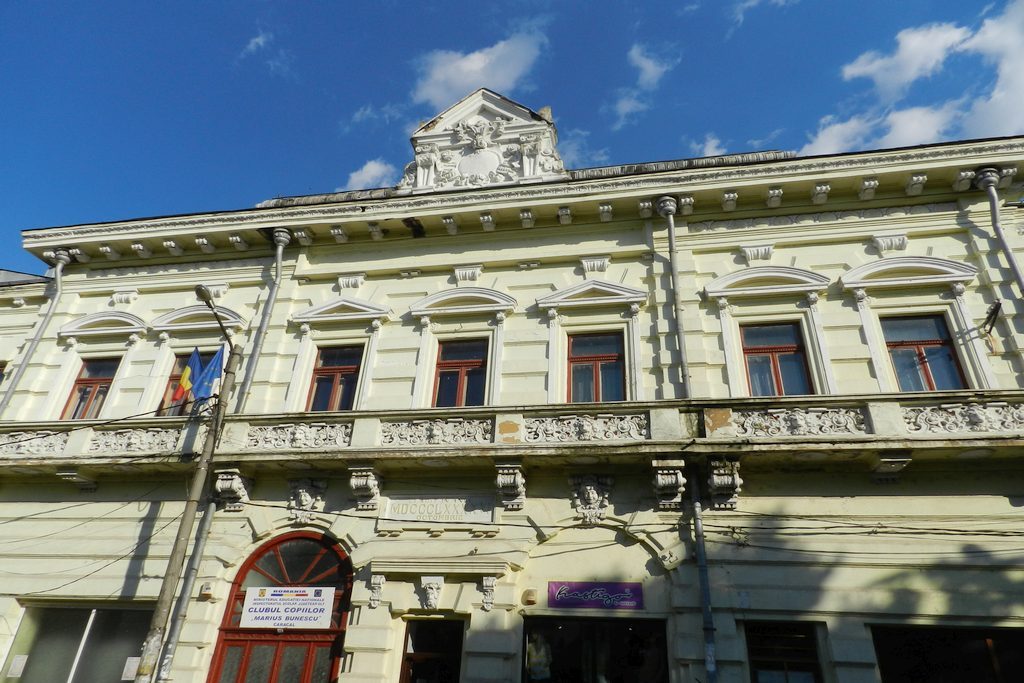

On September 1, 1954 was founded “House of Pioneers” nearby Iancu Jianu’s memorial house, designed to shape the minds of children, to develop their skills and abilities, talents, to enrich their knowledge. Initially functioned with a number of 10 circles, then in 1970 with 15 circles, with the following profiles: hiking, karts, instrumental music, cineclub, photography, handicrafts, theater, literature, radio, model airplanes, model rockets, model boats, fine arts, traditional dances, electrotechnics. After 1990 its name was changed into the name
“CHILDREN and STUDENTS’ PALACE”, modifying at the same time the structure and name of the departments. Currently the palace has 11 departments: Informatics, Boats Model, Electronic Constructions, Karting, clothing design, Table Tennis, Vocal and instrumental music, Painting, Jurnalism, French Culture and Civilization, Modern Dance. During this period children involved in extracurricular activities have won numerous awards and trophies at the county and inter-county competitions in the specialty of departments. Marius Bunescu was a romanian painter, organizer of the National Museum of Art, the director of Anastase Simu Museum. Marius Bunescu personality impresses by the contribution which he brought to Romanian artistic life, both in the creation, as a painter and illustrator and in administration, as founder and director of museums and galleries in Bucharest. He spends the first 20 years of life without continuous contact with the painting, being self taught in a period in which he tries several professions, from accounting to technical draftsman. He receives the first lessons of paintings and drawings in Constanta, between 1904 and 1906 from Dimitrie Hârlescu. This directs him to deepen his studies in Germany, where he will join in 1906, the Royal Academy in Munich, like all those who represented promises in Romanian art: Luchian, Gheorghe Petrașcu, Theodor Pallady, Iosif Iser, Octav Băncilă, Tonitza, Samuel Mützner, Cecilia Cuțescu-Storck, Ipolit Strâmbu and others. Hee he meets Hermann Groeber, with which will study painting and in the workshop of which he will complete its formation. He assimilates the impressionism in its German version and practice it for a while, but will give up to this influence soon. The theme which he feels attracted with – city landscape and its solidarity image – se află în is incompatible with the way the atmosphere treated in a impressionist way interposes to the clarity of the subject subject. He makes his debut in 1911, at the Official Saloon in Bucharest, with five works that which he sells, and its first personal exhibition opens it in 1919 at Minerva Library. A year later, he begins his long administrative career, receivig the leadership of Anastase Simu Museum, and later, after the death of the collector, becomes diresctor of Memorial House Simu.
The interwar period is when he records the most significant artistic achievements and also the time when he reaches a stage of maturity in creation. Has a number of personal exhibitions, received with enthusiasm by art critics and with interest from the collectors environment, draws up The Catalog of Simu Museum in 1937, receives National Award for painting in 1938, and in 1940 is awarded with Cultural Merit in rank of Knight first class. In the years after 1947 Bunescu continued on the path started before without transform his style, to adapt to new conditions imposedby ideological art.
